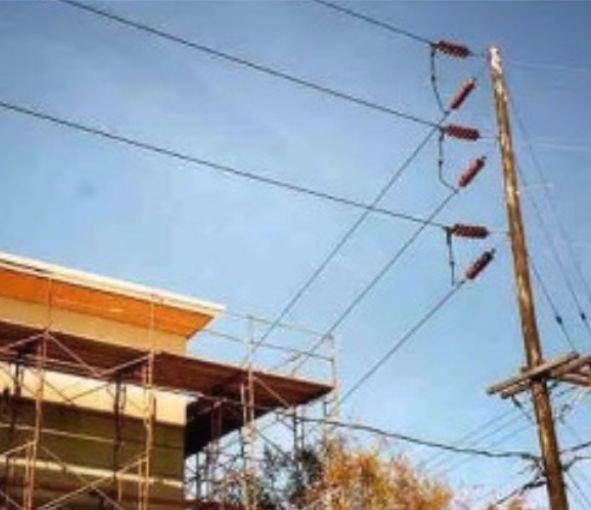Restricted Space Precautions
Working around high voltage power lines in construction poses a significant risk of electrocution and electrical injuries.
Important general electrical safety precautions when working around high voltage power lines in construction include:
- No person is allowed to perform any construction activity within the restricted space surrounding an overhead high-voltage line or equipment unless:
- that person is the owner, an authorized employee, or authorized (in writing) agent of the overhead high voltage system,
- proper notification is provided, and the line and/or equipment is de-energized and visibly grounded by the owner of the high-voltage system or authorized agent, or accidental contact is prevented by use of insulating barriers or guards,
- insulated power lines (not tree wire) and equipment designed and engineered to allow only incidental contact are installed by the owner of the high-voltage system or authorized agent.
- For high voltage power lines rated more than 600 Volts (V) and up to 50 kilovolts (kV), restricted space extends 10 feet in all directions from the surface of the line or equipment.
- For high voltage power lines rated over 50 kV, restricted space extends 10 feet plus 0.4 inch for each one kV over 50 kV, or twice the length of the insulator (but never less than 10 feet) in all directions from the surface of the line or equipment.
- For equipment or structures in transit, on level surfaces, restricted space extends:
- four feet in all directions from lines or equipment rated 50 kV or less,
- 10 feet in all directions for lines or equipment rated more than 50 kV, and
- 16 feet in all directions for lines or equipment rated more than 345 kV up to and including 750 kV.
- Mobile Cranes: Large cranes used in construction or industrial settings that can be transported from one location to another. When a mobile crane is being moved on level surfaces, the clearance requirements mentioned earlier would apply.
- Heavy Machinery: Various types of heavy machinery, such as excavators, bulldozers, or loaders, that are transported from one construction site to another. These machines may need to be moved on public roads or within construction zones, requiring adherence to clearance requirements.
- Prefabricated Buildings: Modular or prefabricated structures, such as portable classrooms, office trailers, or temporary housing units, which are transported to different locations. These structures are often moved on flatbed trucks or trailers, and clearance requirements must be followed during transit.
- Oversized Loads: Large and heavy equipment or structures that require special permits for transportation, such as wind turbine components, oil rig modules, or industrial equipment. When these oversized loads are transported on highways or roads, the clearance requirements need to be observed.
- Electrical Substations: Mobile or temporary electrical substations that are used during construction or maintenance of power distribution systems. These substations may need to be transported to different locations, and the clearance distances mentioned earlier would be relevant during their transit.
Knowledge Check Choose the best answer for the question.
4-7. For high voltage power lines rated more than 600 Volts (V) and up to 50 kilovolts (kV), restricted space extends _____ in all directions from the surface of the line or equipment.
You forgot to answer the question!

